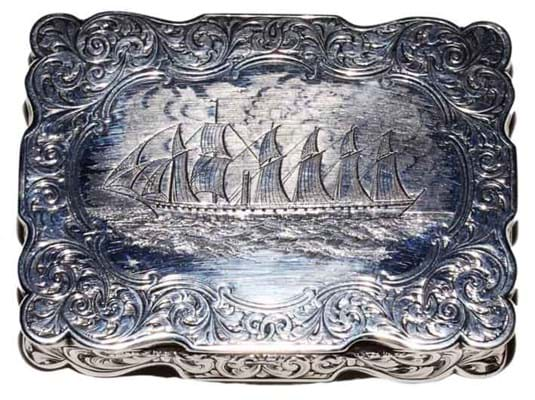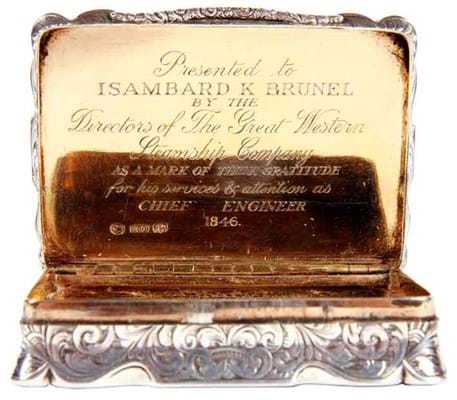The reason was two-fold: to the front was engraved an accurate rendering of the SS Great Britain steamship (a scene thought to be unique on a Mills box), while to the interior was the inscription Presented to Isambard K. Brunel by the Directors of the Great Western Steamship Company as a mark of their gratitude for his services and attention as Chief Engineer 1846.
Brunel, his friend Thomas Guppy and a group of Bristol investors had formed the Great Western Steamship Company in 1836 with the intention of building a line of huge steamships for a regular scheduled transatlantic service from Bristol to New York.
After protracted delays, the SS Great Britain followed SS Great Western into service in 1845. At 322ft (98m) long, she was by far the largest vessel afloat and (although rigged with secondary sail power) the first to combine an iron hull with screw propulsion.
However, the presentation of this 4oz snuff box (hallmarked for Birmingham 1846) doubtless pre-dated September 1846 when, following a navigational error, the ship ran aground in Dundrum Bay on the north-east coast of Ireland. Although refloated at great expense to the long-suffering shareholders of the Great Western Steamship Company, she was sold for salvage and the firm folded.
Nevertheless the ship itself did survive and today forms part of the National Historic Fleet.
Simon Jones of Jones & Jacob said the vendor of the snuffbox was a private collector and speculated it was among the many personal assets Brunel sold to help fund his next shipbuilding project, the even larger SS Great Eastern launched in 1858.
The buyer, who bid many times higher than the £1500-2000 estimate at the sale on December 5, was a specialist silver dealer.
The buyer's premium 15%








